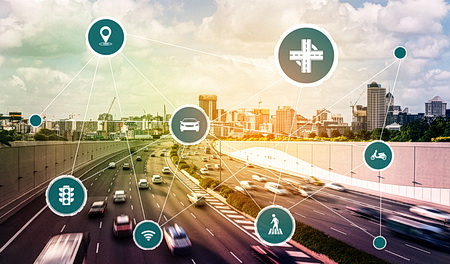
Artificial intelligence (AI) is rapidly transforming the transportation industry, and traffic control is no exception. AI is being used to improve traffic flow, reduce congestion, and make roads safer.
Collecting Traffic Data in Real Time
One way is through real-time traffic monitoring. AI-powered cameras and sensors can be used to collect real-time data on traffic flow, weather conditions, and other factors. This data can then be used to optimize traffic signals, adjust speed limits, and reroute vehicles around congestion.
For example, the city of Singapore is using AI to control its traffic lights in real-time. The system uses data from sensors and cameras to detect traffic conditions and adjust the timing of traffic lights accordingly. This has been shown to reduce congestion by up to 30%.
Predicting Traffic Ahead of Time
Another way that AI is being used in traffic control is through predictive traffic modeling. AI can be used to develop models that predict traffic patterns. This information can be used to anticipate congestion and take steps to mitigate it, such as adjusting traffic signals or deploying variable message signs.
For example, the Dutch company TomTom is using AI to develop a predictive traffic model for the city of Amsterdam. The model is expected to help reduce congestion by up to 20%.
Autonomous Vehicles
Besides the obvious use of AI for self-driving vehicles, they also communicate with the traffic infrastructure, such as traffic lights and sensors. This communication can be used to coordinate the movement of vehicles and reduce congestion.
For example, the company Waymo is developing a fleet of self-driving cars. The cars are expected to be able to communicate with each other and with traffic infrastructure to avoid congestion and accidents.
AI in Transportation
Finally, AI is being used to develop intelligent transportation systems (ITS). ITS is a broad range of technologies that can be used to improve transportation efficiency and safety. AI is being used to develop ITS solutions for a variety of applications, such as traffic signal control, parking management, and public transportation.
For example, the city of Los Angeles is using AI to develop a smart parking system. The system uses data from sensors and cameras to track the availability of parking spaces. This information can then be used to help drivers find parking more easily.
These are just a few of the ways that AI is being used in traffic control today. As AI technology continues to develop, we can expect to see even more innovative and effective ways to use AI to make our roads safer and more efficient.
It Doesn’t End There
In addition to the above, here are some other ways that AI is being used in effective traffic control:
- Using AI to detect and respond to traffic incidents: AI can be used to analyze data from sensors and cameras to detect traffic incidents, such as accidents or breakdowns. This information can then be used to send alerts to drivers, adjust traffic signals, or deploy emergency vehicles.
- Using AI to optimize public transportation: AI can be used to optimize the routing and scheduling of public transportation services. This can help to reduce travel times and improve the efficiency of public transportation systems.
- Using AI to personalize traffic information: AI can be used to personalize traffic information for individual drivers. This information can be tailored to the driver’s specific needs and preferences, such as their destination, route, and arrival time.
The use of AI in traffic control is still in its early stages, but it has the potential to revolutionize the way we manage our roads. As AI technology continues to develop, we can expect to see even more innovative and effective ways to use AI to make our roads safer, more efficient, and more sustainable.
Here are some of the challenges and limitations of using AI in traffic control:
- Data availability: The use of AI in traffic control requires a large amount of data. This data can be difficult and expensive to collect, especially for large-scale systems.
- Technical challenges: The development and deployment of AI-based traffic control systems can be technically challenging. This is due to the complexity of the systems and the need to ensure that they are reliable and secure.
- Public acceptance: The public may not be comfortable with the idea of AI-based traffic control systems. This is due to concerns about privacy, security, and the potential for bias in the systems.
Summary
Despite ongoing challenges, the use of AI in traffic control is a promising area of research. As AI technology continues to develop, we can expect to see even more innovative and effective ways to use AI to make our roads safer, more efficient, and more sustainable.